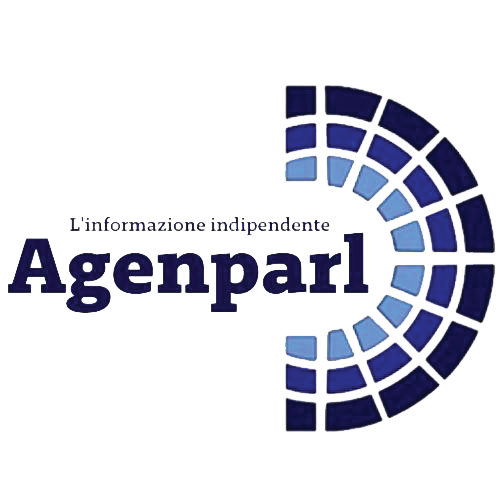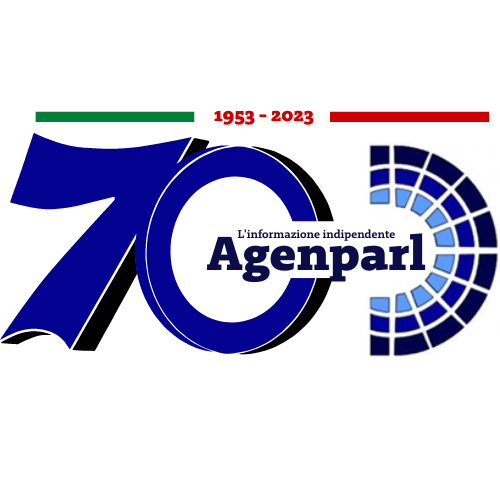 (AGENPARL) - Roma, 18 Aprile 2025
(AGENPARL) - Roma, 18 Aprile 2025(AGENPARL) – Fri 18 April 2025 A weekly compendium of media reports on science and technology achievements
at Lawrence Livermore National Laboratory. Though the Laboratory reviews
items for overall accuracy, the reporting organizations are responsible for
the content in the links below.
LLNL Report, April 18, 2025
Alongside the most advanced computer in the world, El Capitan, LLNL also
possesses the world’s most energetic laser.
An effective deterrent, no explosions required
https://www.scrippsnews.com/science-and-tech/how-a-lab-in-california-is-ensuring-the-effectiveness-of-us-nuclear-weapons
Nuclear testing has long been depicted as mushroom clouds emerging and rising
above remote desert landscapes or the ground slowly collapsing like a
sinkhole as an underground detonation goes off. But those days are long gone,
decades away in fact, from how the United States maintains its nuclear
weapons in 2025.
The U.S. nuclear stockpile is arguably the most important part of the
country’s national security, but the government stopped testing nuclear
weapons here in 1992.
Instead, it has put its faith in a handful of top-notch science facilities
like Lawrence Livermore National Laboratory (LLNL) that maintain the nuclear
stockpile and test it — without explosions.
Scripps News was granted access to the California lab, where world-renowned
physicists use supercomputers to perform complex laser experiments in the
lab’s National Ignition Facility (NIF), mimicking the conditions of a nuclear
bomb going off.
Read More
https://www.scrippsnews.com/science-and-tech/how-a-lab-in-california-is-ensuring-the-effectiveness-of-us-nuclear-weapons
Livermore Computing Center’s flagship facility, Building 453, supports
LLNL’s critical national missions and science.
Powering up and cooling down El Capitan
https://midwestcontractor.news/MWC/article/957C71EC-four-projects-in-california-receive-build-america-awards-from-agc-and-construction-risk-partners
The Association of General Contractors (AGC) and Construction Risk Partners
recently honored this year’s best new and renovation construction projects
with Build America Awards at the AGC Annual Convention.
Nova Probst Joint Venture was presented with an award in the Utility
Infrastructure New category for the Exascale Computing Facility Modernization
in Livermore, California. The modernized Exascale Computing Facility provides
enhanced power and cooling for current and future supercomputers, and will
enable the Lawrence Livermore National Laboratory to operate a series of the
world’s fastest high-performance computers in the coming decade.
The joint venture team provided an additional 40 MW of power and 18,000 tons
of process cooling water to Livermore Computing’s B453 by modifying and
upgrading an existing building and an adjacent 3.5 acres at the laboratory.
Read More
https://midwestcontractor.news/MWC/article/957C71EC-four-projects-in-california-receive-build-america-awards-from-agc-and-construction-risk-partners
To create fusion ignition, the National Ignition Facility’s laser energy is
converted into X-rays inside the hohlraum, which then compress a fuel capsule
until it implodes.
Everything in play for fusion tech
Fusion industry meets in London to discuss ‘one of the economic opportunities of the century’
The inaugural Fusion Fest by Economist Impact, held in London, featured 400
attendees and more than 60 speakers from around the world.
Kim Budil, director of the Lawrence Livermore National Laboratory, which is
home to the National Ignition Facility, noted that the machine had recently
achieved a fusion gain for the eighth time.
In a recent shot, she said that the device had produced 7 MJ with about 2 MJ
having been delivered to the small capsule target. This represents a gain of
about 3.4 – much more than its previous record of 2.4.
Many delegates at the meeting were optimistic that significant developments
are within reach with private firms racing to demonstrate “breakeven” —
generating more power out than needed to fuel the reaction.
The issue is that no one knows what technology will succeed.
Read More
Fusion industry meets in London to discuss ‘one of the economic opportunities of the century’
A clean, efficient process for producing the fuel for nuclear power plants
was made possible by LLNL’s precisely tuned, high-power lasers used for the
Uranium-AVLIS Program.
Tech transfer enables isotope separation
https://climateinsider..com/2025/04/15/hexium-emerges-from-stealth-with-12-million-to-scale-avlis-lithium-enrichment-for-nuclear-fuel/
Hexium, a pioneering isotope separation company, has emerged from stealth
with $12 million in funding to modernize Atomic Vapor Laser Isotope
Separation (AVLIS) technology and reestablish U.S. leadership in isotope
enrichment.
Hexium is modernizing the historic AVLIS technology originally developed by
Lawrence Livermore National Laboratory (LLNL) through a previous U.S.
Department of Energy investment of nearly $2 billion.
By addressing bottlenecks in the production and sourcing of critical isotopes
like lithium-6 and lithium-7, Hexium is helping reduce the U.S.’s reliance
on foreign sources and ensuring a reliable, domestic supply of isotopes for
energy, space and medical applications.
AVLIS is a proven, scalable technology capable of extracting high-purity
isotopes quickly and at lower costs, including lithium. Its compact facility
footprint and established supply chain make it ideal for large-scale
production.
Read More
Hexium Emerges From Stealth With $12 Million to Scale AVLIS Lithium Enrichment for Nuclear Fuel
General flowchart of the pipeline for building the Centrifuge reference
database based on the nt database. (Image: Jose Manuel Marti)
A Dewey Decimal System for microorganisms
https://maldankon.cloud/en_SG/page/revolutionizing-microbe-identification-the-game-changing-nucleotide-database-16ab59
Imagine trying to catalog a library with millions of books where some are
misfiled and others authored by the wrong writers. This daunting challenge
mirrors the difficulties faced by researchers at Lawrence Livermore National
Laboratory (LLNL) as they grappled with the National Center for Biotechnology
Information’s (NCBI) Nucleotide (nt) database, a colossal repository of DNA
sequences from countless species.
The NCBI nt database has transformative potential, aiding in everything from
disease diagnosis to environmental monitoring. However, it’s become
increasingly unwieldy, cluttered with errors and outdated information,
according to Nicholas Be, leader of LLNL’s Microbiology/Immunology Group.
Notably, the database hasn’t received updates compatible with the widely-used
Centrifuge tool since 2018, hindering accurate DNA classification.
In a pioneering study published in mSystems, LLNL researchers revealed a
groundbreaking solution: creating optimized indexes of the nt database that
enhance how scientists classify microorganisms.
Read More
https://maldankon.cloud/en_SG/page/revolutionizing-microbe-identification-the-game-changing-nucleotide-database-16ab59
——————————————————————————
Founded in 1952, Lawrence Livermore National Laboratory https://www.llnl.gov
provides solutions to our nation’s most important national security
challenges through innovative science, engineering and technology. Lawrence
Livermore National Laboratory is managed by Lawrence Livermore National
Security, LLC for the U.S. Department of Energy’s National Nuclear Security
Administration.
Read previous Lab Report articles online https://www.llnl.gov/news/lab-report
Unsubscribe from this newsletter
